Groin strains, or adductor strains, are common injuries that can be both frustrating and challenging to manage. These injuries often occur during activities that involve sprinting, sudden changes in direction, or heavy lifting, such as squats and deadlifts. Understanding how to effectively manage a strained adductor is essential to ensure a full recovery and to prevent re-injury.
1. Understanding Adductor Strains
Common Causes: Adductor strains typically occur during high-intensity activities that place a significant load on the muscles of the inner thigh. Running, particularly sprinting, and sudden changes of direction in sports are common culprits. Additionally, heavy resistance exercises like squats and deadlifts can also lead to groin strains, especially if the muscles are not adequately warmed up or if the load is too heavy.
Symptoms: An adductor strain is often characterized by sharp pain in the groin area, particularly during activities that involve moving the legs together or when trying to squeeze the legs inward. Swelling, bruising, and tenderness in the inner thigh are also common symptoms.
2. The Challenges of Rehabbing a Groin Strain
High Risk of Re-Strain: One of the most significant challenges with groin strains is their tendency to recur. Research indicates that once a muscle has been strained, the risk of re-strain is significantly increased. This is why proper management and rehabilitation are crucial. Rushing back into activities before the muscle has fully healed can lead to chronic issues and prolonged recovery times.
Importance of Early Management: The initial phase of managing an adductor strain involves reducing pain and inflammation. This usually includes rest, ice, and compression to control swelling and pain. Avoiding activities that aggravate the injury is essential during this phase.
3. Effective Management Strategies
Rehabilitation: Rehabilitation is the cornerstone of managing an adductor strain. Working with a qualified physiotherapist or chiropractor is essential to develop a personalized rehab plan. This plan will typically involve:
Progressive Strengthening: Gradually strengthening the adductor muscles and the surrounding muscles of the hip and core to restore function and prevent future strains.
Flexibility Training: Stretching and mobility exercises to ensure that the muscles are flexible and can handle the demands of physical activity.
Sport-Specific Drills: Gradually reintroducing sport-specific movements to ensure that the muscles can handle the demands of the activity without re-injury.
Return to Activity: One of the critical aspects of adductor strain management is knowing when and how to return to activity. Returning too soon can lead to re-injury, so it’s important to follow a graduated return-to-sport protocol. Your physiotherapist or chiropractor will guide you through this process, ensuring that your muscles are strong and flexible enough to handle the demands of your chosen activity.
Preventing Future Strains
Proper Warm-Up: A proper warm-up is essential to reduce the risk of groin strains. This should include dynamic stretching and activities that mimic the movements of your sport or exercise routine. Ensuring that your muscles are adequately warmed up before intense activity can help prevent strains.
Strength and Conditioning: Regular strength and conditioning exercises that target the adductors and the surrounding muscles can help build resilience and reduce the likelihood of future strains. Incorporating exercises that improve core stability and hip strength is also beneficial.
Gradual Progression: Avoid sudden increases in the intensity or volume of your training. Gradual progression in both load and intensity is key to preventing overuse injuries like groin strains.
Dealing with a strained adductor can be challenging, but with proper management and rehabilitation, you can make a full recovery and reduce the risk of re-injury. It’s important to take groin strains seriously and to work closely with a qualified physiotherapist or chiropractor to ensure that your rehabilitation plan is effective. By following a structured rehab program and incorporating preventative strategies, you can get back to your activities stronger and more resilient than before.
Need help? leave us your details to receive a free call from one of our health professionals
How we can help…
Get to know you:
Understand whether the problem is due to behaviour or trauma and relate the problem to a particular pattern in movement or in life.Find the cause:
Is the problem due to an injury that needs a diagnosis or is it something movement related that needs to be assessed and identified?Make a plan:
Agree on what the problem is, what the goals are, the way we’re going to achieve the goals and over an agreed timeframe.Follow up:
Check in with you along the way and have an open line of communication to ensure you’re on te right track.
